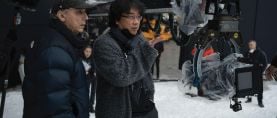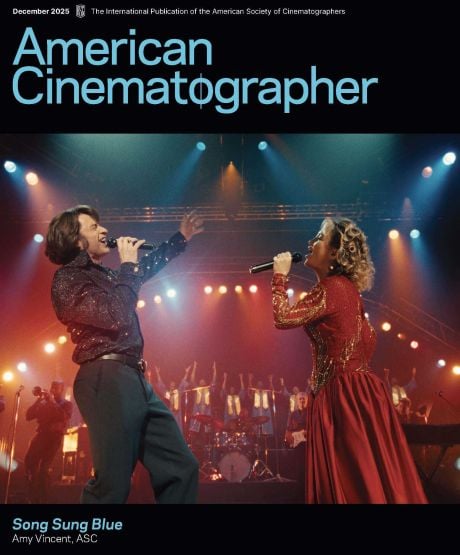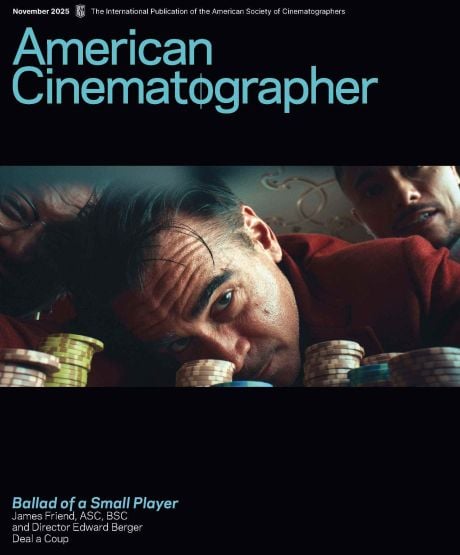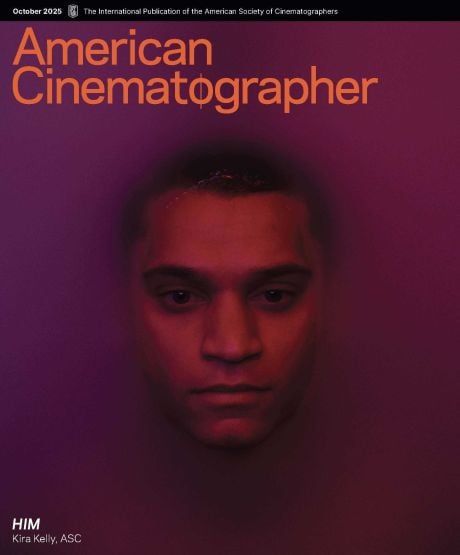
Double Trouble for Sonic the Hedgehog 3
Cinematographer Brandon Trost walks AC through the workflow employed to duplicate actor Jim Carrey.
This article was originally published in AC April 2025
Images courtesy of Paramount Pictures and Sega of America Inc.
Based on the classic Sega video game series, the Sonic the Hedgehog movies have always relied on cutting-edge visual-effects techniques to sell the premise: an impossibly fast blue rodent living among and interacting with humans. The films have also showcased the singular comedic gifts of star Jim Carrey, the man behind mustachioed villain Dr. Ivo “Eggman” Robotnik, who has amped up the cartoonish aspects of his performance with each new installment. For Sonic the Hedgehog 3 — photographed by Brandon Trost, who also shot Sonic 2, and helmed by returning director Jeff Fowler — the filmmakers were tasked with framing twice the frenzied performance, employing a combination of new and old techniques to duplicate Carrey for his dual roles as Ivo and his long-lost grandfather, Gerald.

Trost says watching Carrey “in his gonzo ’90s comedy zone” day in and day out on set was “a marvel to behold. I’m such a Jim Carrey fan, and it’s kind of hard for me not to want to get as much of him as possible — that’s what I grew up on.” But with Sonic 2 behind him, Trost had an inkling about what lay ahead on Sonic 3. “I thought it would be a real challenge because I know how specific Jim can be with his performances. The question was, how were we going to fit two different performances into such a technical workflow?” AC spoke with Trost about the techniques employed to make it happen.
American Cinematographer: How early in the process did you know Carrey would play two characters in this film?
Brandon Trost: My very first prep meeting. I remember the immediate question being, “How are we going to do this?” Between [visual-effects supervisor and 2nd-unit director] Ged Wright’s experience and mine, we felt like we had a solid approach. There are a handful of ways to do it, but you have to break each sequence down and decide which technique makes the most sense. A lot of my experience with that came from directing An American Pickle, where Seth Rogen played two parts for most of the film. I didn’t shoot that one — John Guleserian did a great job with it — but it was a brain-buster figuring out how to make the interactions feel real. You want two characters to seem like independent people having a natural conversation, but you have to shoot them separately.
It always boils down to shooting one of the characters first in the way you envision the scene playing out. Usually, one character is more active, driving the timing and the scene’s momentum, while the other is more reactive. You let the dominant character dictate the timing and structure, then match the second character’s performance to the first one. There are different methods, but that’s the core approach.
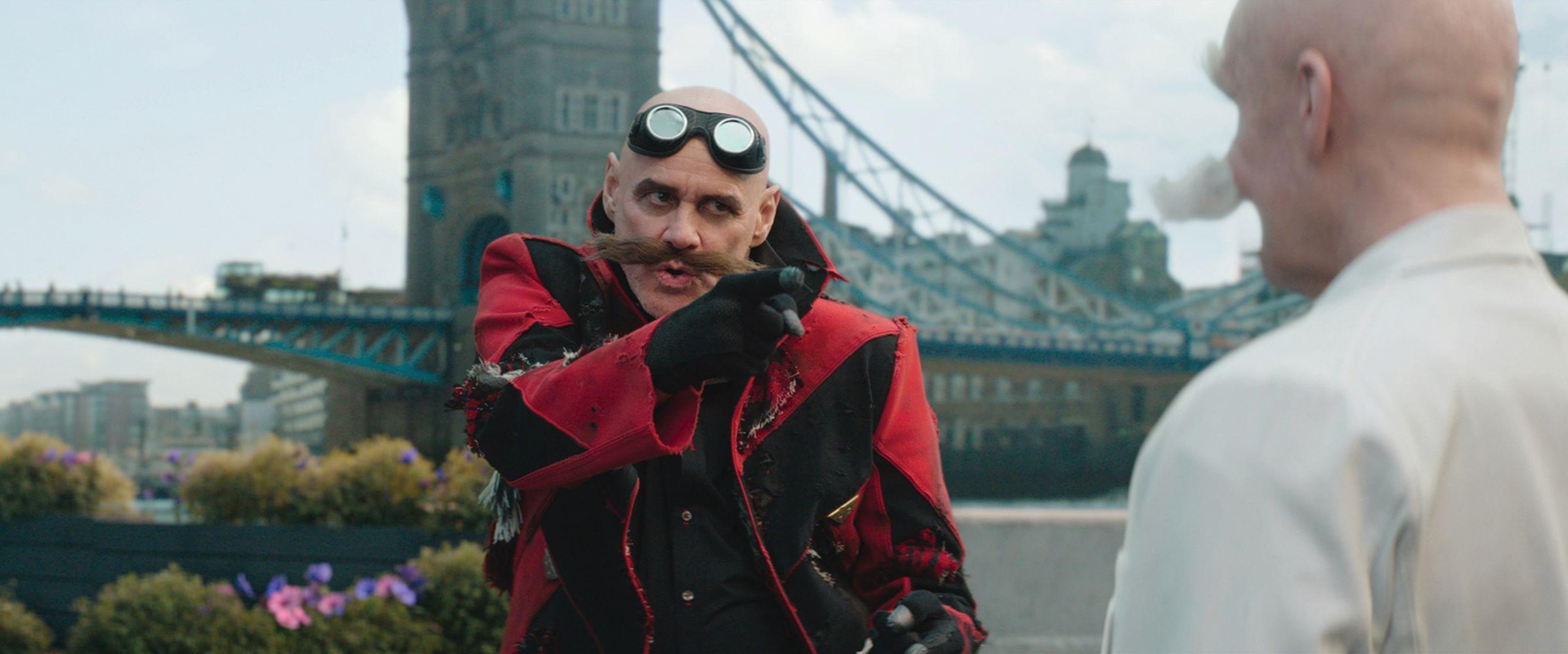
What types of actor-duplication techniques did you use?
Filmmakers have been twinning actors since the dawn of cinema. The simplest way is a classic split-screen effect: Film the actor on one side of the frame, change their hair and makeup, then film them on the other side with a locked-off camera. The challenge is getting the timing right when the second character is reacting to the first.
The tricky shots are where both characters are clearly visible in the same frame. In most movies, though, you can avoid that by using over-the-shoulders, where the second character is played by an acting double. We did that on this movie, just like we did in An American Pickle. Brendan Murphy, a great acting double for Jim, was involved in every [Sonic 3] rehearsal, every conversation, every workshop of the scene. He had to understand Jim’s performance inside and out — and sometimes even anticipate what he might do.
Jim is actually very precise in his approach. When I first worked with him on Sonic 2, I expected a lot of improv because that’s common in comedies. Usually, you run two cameras in cross-coverage to capture improv, and that’s how you get the funniest moments. But Jim isn’t like that at all. He’s incredibly exacting, down to the vowels in his words, the way his eyebrow moves on a syllable, or how his pinky twists at a certain moment. He has it all mapped out in his head. That level of control helped us sync up the two characters in a big way.
One challenge was that because of the elaborate makeup, we couldn’t shoot both roles on the same day. The Gerald Robotnik makeup took three to four hours to apply, so Jim would shoot as one character on a Monday, then we’d come back and film the other side of the same scene on Wednesday, on the same set, with the same lighting and camera positions to match. Our guiding principle was we’d shoot a scene the way we envisioned it, set ourselves up for success from a VFX standpoint, and avoid common pitfalls like occlusion, where body parts cross over each other in ways that make compositing a nightmare.
“There’s always some digital manipulation — slipping the timing, dropping a few frames, adjusting things to make it fit better. But the key is to get the eyelines right.”

When you had to shoot the A side of a scene one day and then come back later to shoot the B side, how did you keep track of the camera position to ensure everything matched?
It was all about meticulous note-taking. We recorded every detail — height, lens, angle, everything. My key grip, Alex Mott, had several techniques for marking positions. He’d put physical marks on the floor or the side of the set. Sometimes, he’d use UV markers so they wouldn’t show up on camera and he could find them with a UV flashlight later. If marking wasn’t possible, he’d take precise measurements — like, “this wheel is exactly this far from that wall.” We also took reference photos for backup.
On the lighting side, my gaffer, Harry Wiggins, relied on lighting logs in terms of physical references — heights, angles, bounce positions, flood notes, etc. Every setup was recorded with 360-degree photos of the set to document lighting positions, which would accompany lighting diagrams. He said they approached this whole thing like librarians. Since all of our lighting was controlled through a board, we could recall the exact lighting setups when we returned to a scene. Our board op, Jake Whittingham, used a GrandMA 2 board to store every setup as its own cue, and would label it by the slate number. That way, when we brought everything back up, it was identical to how it was originally shot.
It was a multi-departmental challenge just in terms of note-taking! We had to be incredibly thorough to ensure we could return to a setup as precisely as possible. First AC Ian Jackson took copious notes about camera settings, lenses, focal measurements and stop. We also had the reference stills, and our DIT, Joe Steel, could pull up dailies through his cart. Steve Casali, our video operator, was crucial for our on-set overlays, where we’d lower the opacity of the original image and align the camera until everything snapped into place.
Of course, sometimes you can follow all the measurements perfectly and still be slightly off. That’s when it comes down to making tiny, hands-on adjustments — minute taps this way or that way — until it’s just right. The image doesn’t lie.
I give so much credit to VFX for putting it all together. There’s a shot from the scene where Ivo and Gerald first meet. At the very end, there’s a Steadicam two-shot where they touch fingers, Ivo rubs Gerald’s head, and they exit the frame. I knew that shot should be motion-control, [so we tried it that way]. But take after take, we were trying to match everything perfectly, and it was just too difficult from a performance standpoint. There were too many technical boxes to check, and Jim had to juggle all of that while delivering complex dialogue. It was just too much. We spent a day proving that motion control could work, but we never used it again. Instead, we focused on Jim’s performance.
We just shot it normally twice. First, we filmed Jim with an acting double, then we did it again a couple of days later with Jim playing the other role. Since it was on Steadicam, those takes were very close but not perfectly matched, but VFX made it work, seamlessly blending the two performances. They used a master shot of Jim as Ivo and replaced Gerald’s head and altered his body and hands to make it work. There were all kinds of tweaks like that.
When we did over-the-shoulders with a photo double, there were times when you could see the photo double’s face, and because, even with the facial prosthetics, it wasn’t exactly Jim, VFX would do minor tweaks, adjusting the jawline, reshaping the nose — just enough so it looked like Jim and the audience wouldn’t think twice about it. Small, subtle fixes like that made a big difference.
“Carrey’s performance timing was almost always spot-on — to the point where if we stopped to try and match the timing more technically, it was more difficult than just letting Jim move with his own instinct.”
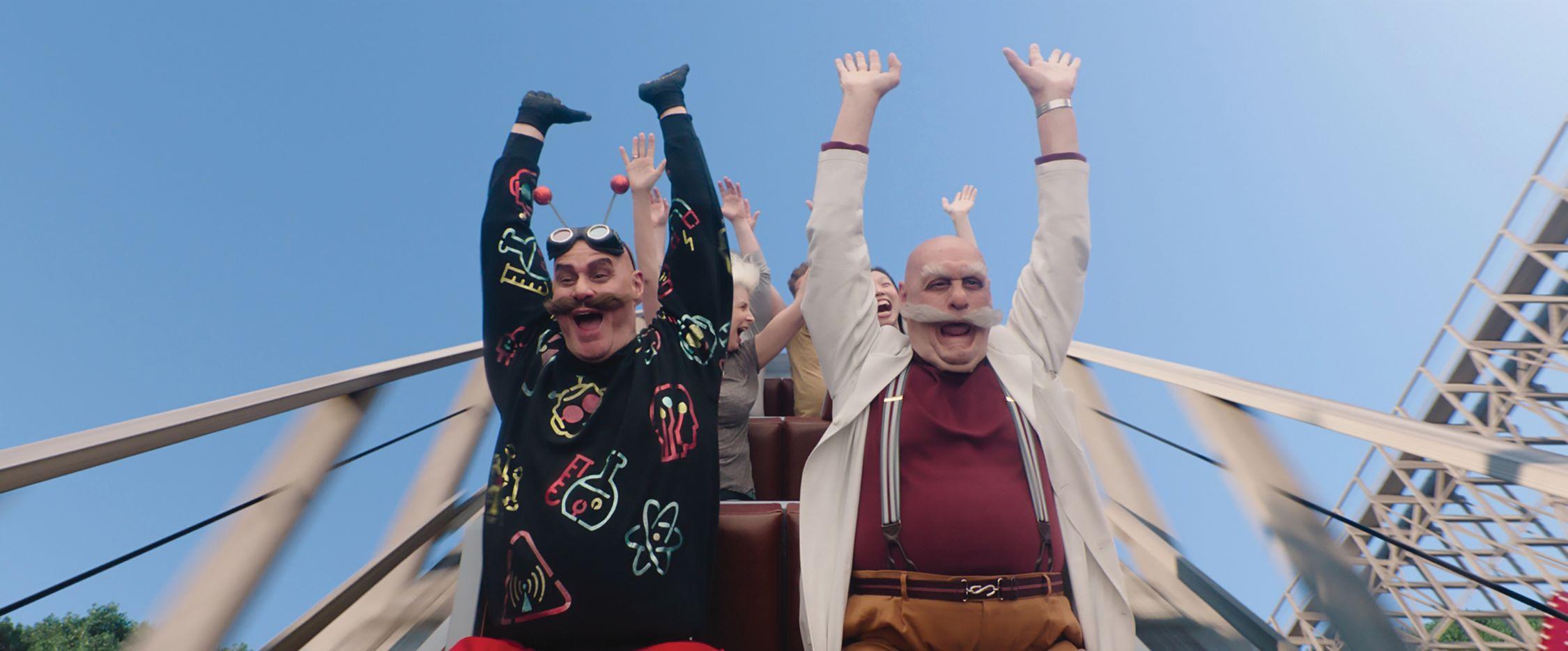
It sounds like, overall, you didn’t shoot with the philosophy that you can just “fix it in post.” The fundamentals fully applied.
Exactly. The VFX tools are there, but the more lax you get about following the rules, the harder, more expensive and more time-consuming it becomes in post. I can’t tell you how many times Al LeVine, the editor, would reach out to me and say, “I can’t believe how well these shots are dropping in.” That’s because we matched everything as precisely as possible. We took a ton of notes and did our due diligence to ensure that the shots would align seamlessly.
Of course, there’s always some digital manipulation — slipping the timing, dropping a few frames, adjusting things to make it fit better. But the key is to get the eyelines right.
Part of my pitch early on was that not every shot needs to be a “prove it” gimmick shot; we needed a couple of cool moments when the two characters first meet, but for the most part, it should feel natural. If you shoot it like a regular scene, audiences just buy into the idea that they’re two different people. You’re not constantly calling attention to the fact that it’s the same actor.
For that scene where we decided not to use motion-control, we started leaning a little more into what you were saying: “Can’t VFX just fix it?” The answer is yes, to a degree. But we still worked hard to match everything as closely as possible. Our process became: First, shoot the A side as correctly as possible; then, for the B side, match the framing as best as we could. Sometimes we’d frame the second character a little more centrally so VFX could extract him and place him into the first frame more easily. Other times, we’d put a bluescreen behind the second pass to help with compositing.
Another aspect that requires great care is the timing between both sides. Traditionally, a hero take is selected from the A side so the B side can answer to that timing specifically. While we would often have a hero take in mind, we didn’t often look to match it in an exacting way with playback, etc., because Carrey’s performance timing was almost always spot-on — to the point where if we stopped to try and match the timing more technically, it was more difficult than just letting Jim move with his own instinct. We would check our work after, and his timing was always unreal.
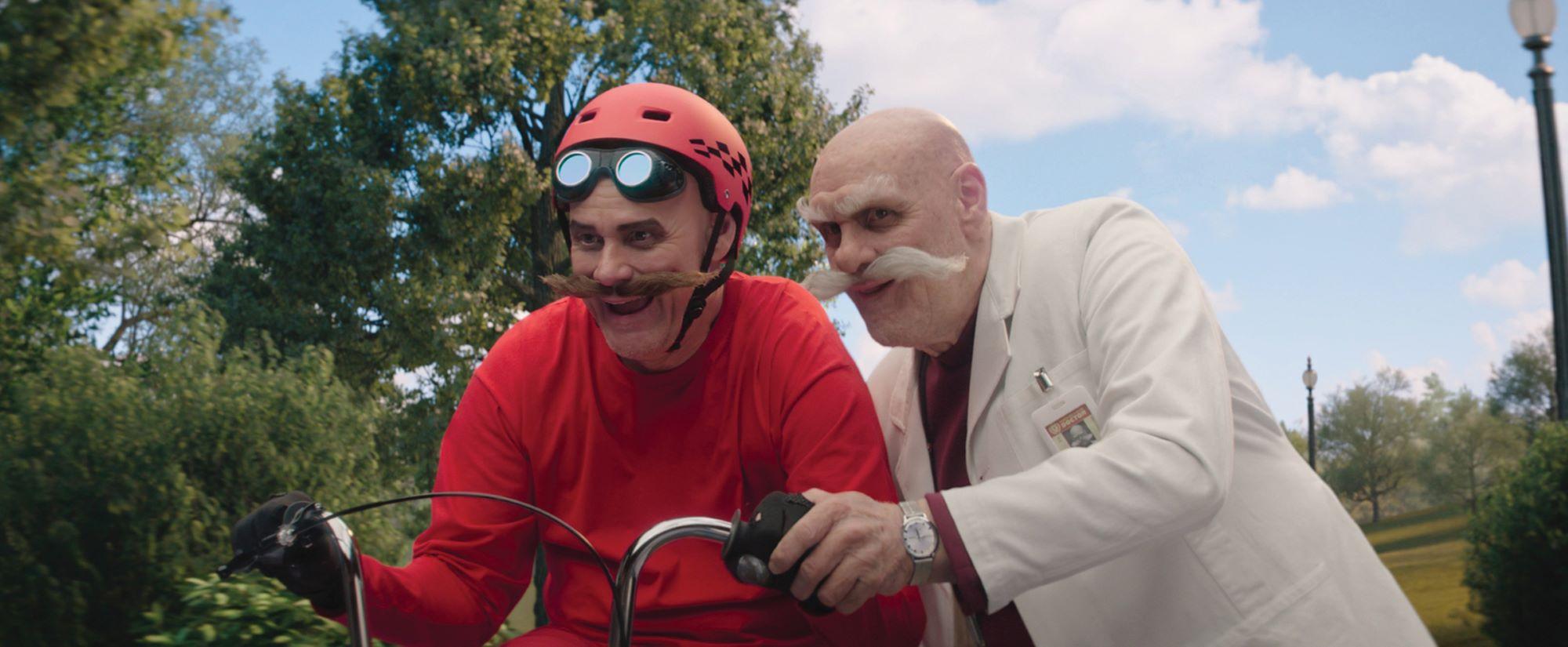
How did you approach the dance number in the laser hallway, where the two Robotniks dance their way through it to reach a secured vault?
I’m really proud of that scene. I played a key role in figuring out how to put it all together, which was a lot of fun. The crazy part is how incredible it looked live. Adam LaBay at Precision Lasers was our laser designer, and he put together a stunning show that was all live on set. Unfortunately, some of the real lasers interfered with the VFX in post and had to be removed. The concept is that the characters are wearing special suits that reflect the lasers away from their bodies, and some real estate was needed in the frame to add more interaction without distracting from the effect too much. So, as cool as it looks in the final cut, it was even cooler on set with the lasers spinning for real, but Adam’s design paved the way for all the additional lasers added in post.
“For the wide shots, it’s not Jim; in close-ups, it usually is. There are a few moments where he’s physically holding a stand-in for Gerald, where Ivo is real, but Gerald’s face is replaced.”
That sequence also used the most face replacement of any scene in the film. We had two incredibly talented dancers, Anthony and Charles Bartley, along with great choreographers, Alison Faulk and Luke Broadlick, who built the entire routine around the song Jim wanted to dance to [“Galvanize” by the Chemical Brothers]. I would go to this huge stage across the lot during lunch, work with the dancers and the director, and film the sequence to block it out. It was essentially a living storyboard. I shot everything on my phone, figuring out which shots we needed, then we handed those clips to the editor, who cut them together into a rough animatic. That was incredibly useful, because it helped us break down exactly which shots needed Jim [so we could] prioritize those. Jim did a lot of the dance, especially in the beginning, when the characters are gearing up. For the wide shots, it’s not Jim; in close-ups, it usually is. There are a few moments where he’s physically holding a stand-in for Gerald, where Ivo is real, but Gerald’s face is replaced.
One of the best face replacements is at the end of the sequence, when Ivo lifts Gerald into the air. Gerald strikes this dramatic swan pose as he’s lifted, and when his face moves close to the camera, it’s a face replacement. The heavy prosthetics on Gerald actually worked in our favor. Since so much of Jim’s face was covered in latex, we could apply identical prosthetics to a double, stunt performer or dancer. If the shot was far enough away, it was almost impossible to tell the difference. That gave us a lot of flexibility.
We also used some traditional split-screen techniques, especially when they’re standing together before the dance begins. For singles, it’s just Jim playing both roles, but once the movement starts, we primarily used the dancers. In fact, we shot everything with the dancers first, even the shots we knew we’d eventually put Jim into, just in case something didn’t line up later. That way, we always had coverage.
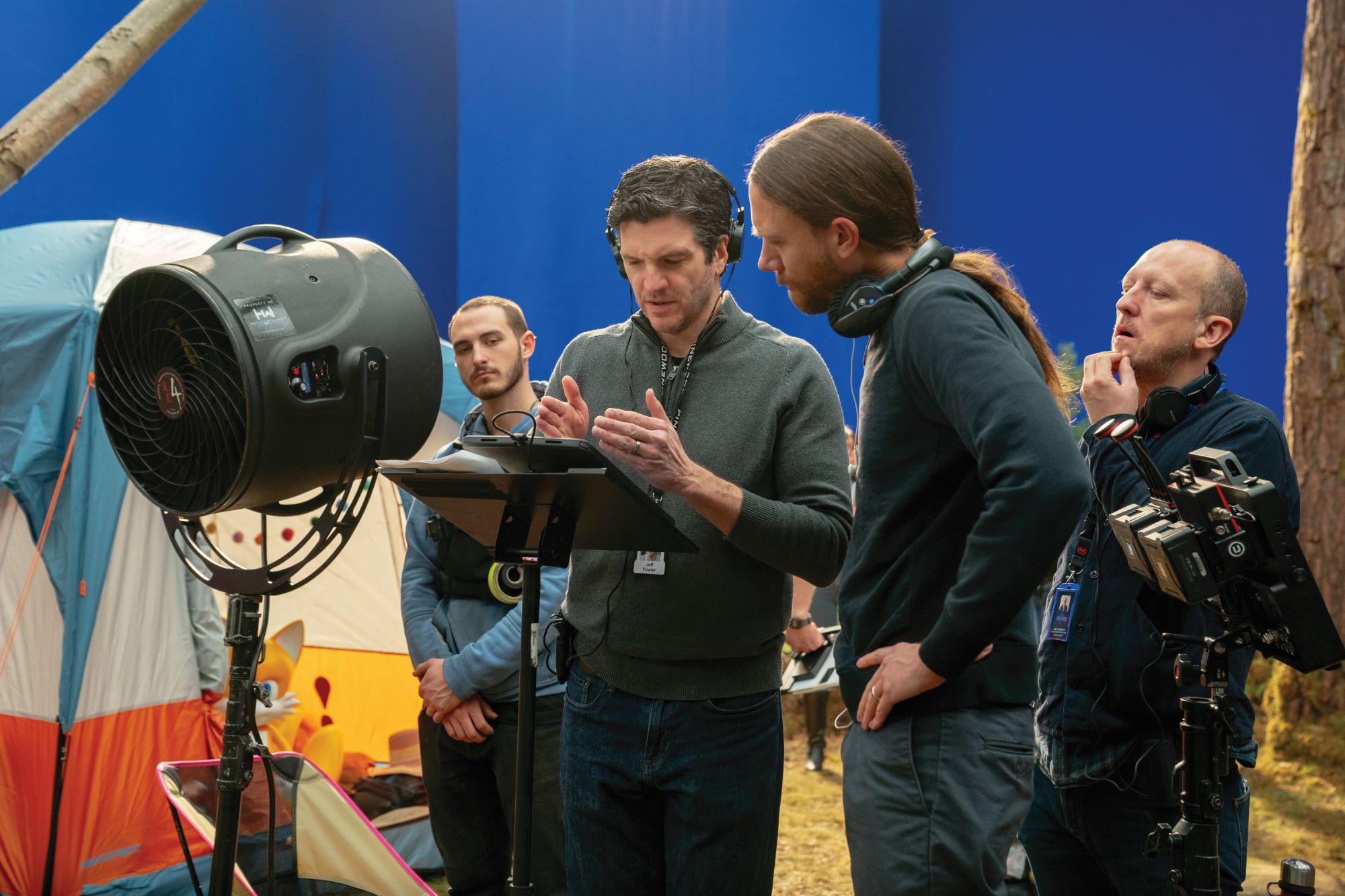
What was the biggest challenge of working with so many visual effects, particularly when they comprise half the cast — CG characters Sonic [voiced by Ben Schwartz], Tails [Colleen O’Shaughnessey], Knuckles [Idris Elba] and Shadow [Keanu Reeves]?
Sonic 2 was a huge learning curve for me in terms of VFX integration. So much of what you’re setting up for doesn’t exist in reality, and you have to make so many accommodations for what is yet to come, in terms of lighting, framing, camera moves, eyelines, etc. Sonic 3 was even bigger and more challenging, but it was easier because of all the experience we’d gained along the way. You just accept that only about 30 percent of what you see on set is what the final frame will actually look like. Everything else — set extensions, digital characters, environmental effects — is still to come. There’s a lot of trust involved: VFX has to trust that I’m giving them a strong foundation to build on, and I have to trust that they’ll deliver a final image that aligns with what I envisioned. And they always did.
“You just accept that only about 30 percent of what you see on set is what the final frame will actually look like.”
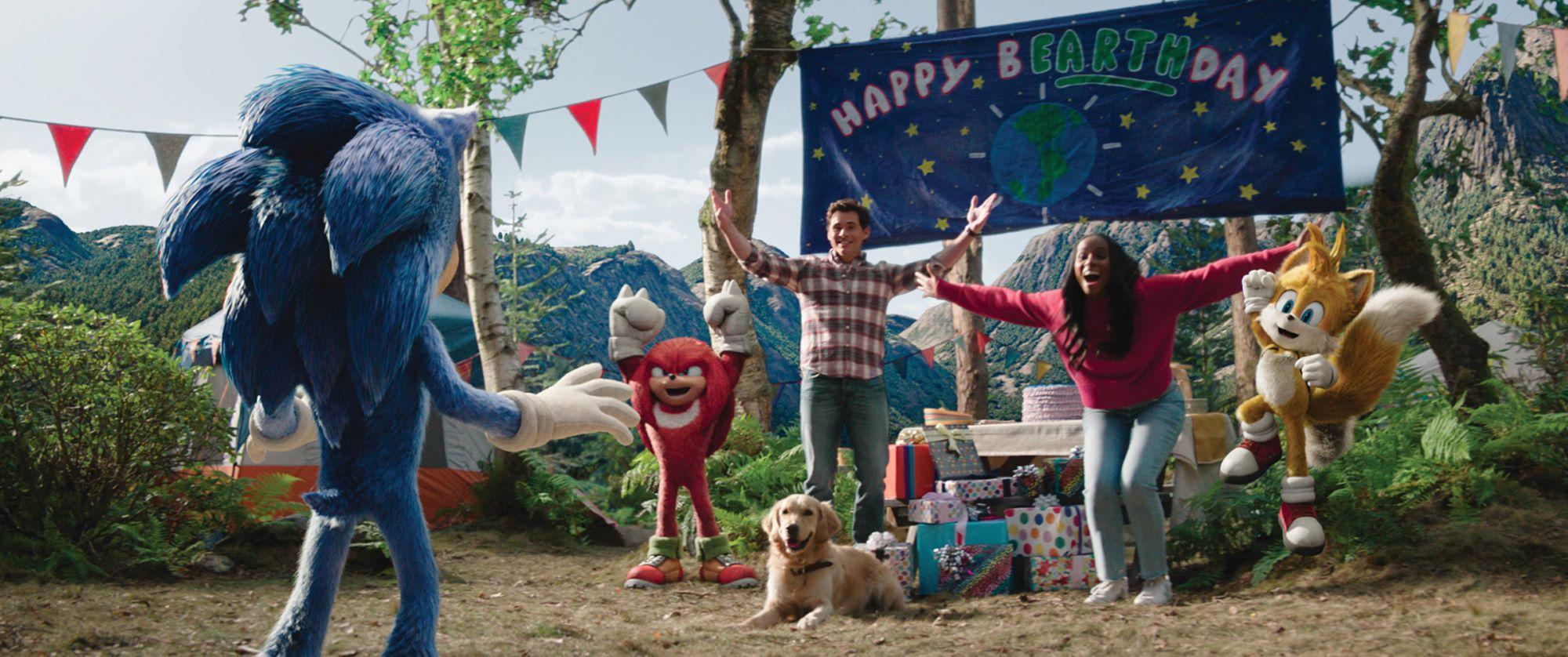
TECHNICAL SPECS
Camera | Arri Alexa 35
Lenses | Panavision T Series Anamorphic,
Anamorphic Zoom, Primo 70, Primo V



